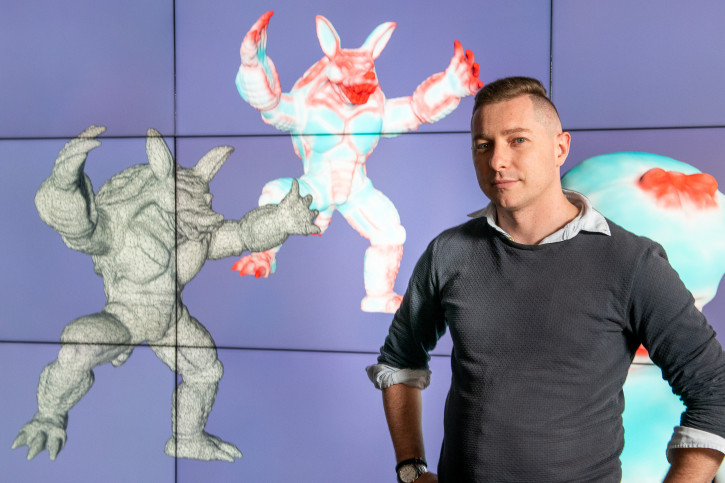Achieve impressive compression rates while ensuring meshes look their absolute best and keep geometry needed for top quality animation.

Dr Richard Roberts and the Future Studio Solutions team (FSS) at the Computational Media Innovation Centre are aiming to bridge the gap between computer graphics research and industry.
The FSS team work with world class studios in Japan to develop compelling production workflow solutions that reduce cost and increase accessibility.
One such solution is for the compression of highly detailed meshes.
Videogame studios require ever more highly tessellated meshes to achieve the immersion that consumers demand. These meshes have such high memory footprints that management of memory becomes a serious problem; not only for display, but for storage, processing, and animation.
Quadric decimation is a method for compressing meshes until a desired compression rate is achieved. This has two flaws:
The FSS team have solved these issues and created a fast, artist-friendly software for mesh compression called Multi-Resolution Sub-sampled Saliency (MRSS).
MRSS uses novel methods for identifying salient areas of a mesh that are important for visual detail, and important for animation. When paired with a quadric decimation algorithm, a rapidly generated saliency map can be used to preserve this important detail while achieving the desired compression rate.
Achieve impressive compression rates while ensuring meshes look their absolute best and keep geometry needed for top quality animation.
Calculate a saliency map of important details for even the most complex of meshes in only seconds!
MRSS can be used as a standalone software with visualisation, saliency mapping, and quadric decimation functions, or integrated into industry standard platforms like ZBrush and Maya.
A stand-alone version of MRSS is ready to use and we would love to test it with a small group of industry professionals.
If compressing meshes is an important part of your workflow, please reach out to Liam Sutton details below.
If you would like to learn more about Victoria University of Wellington’s Computational Media Innovation Centre, click here.
